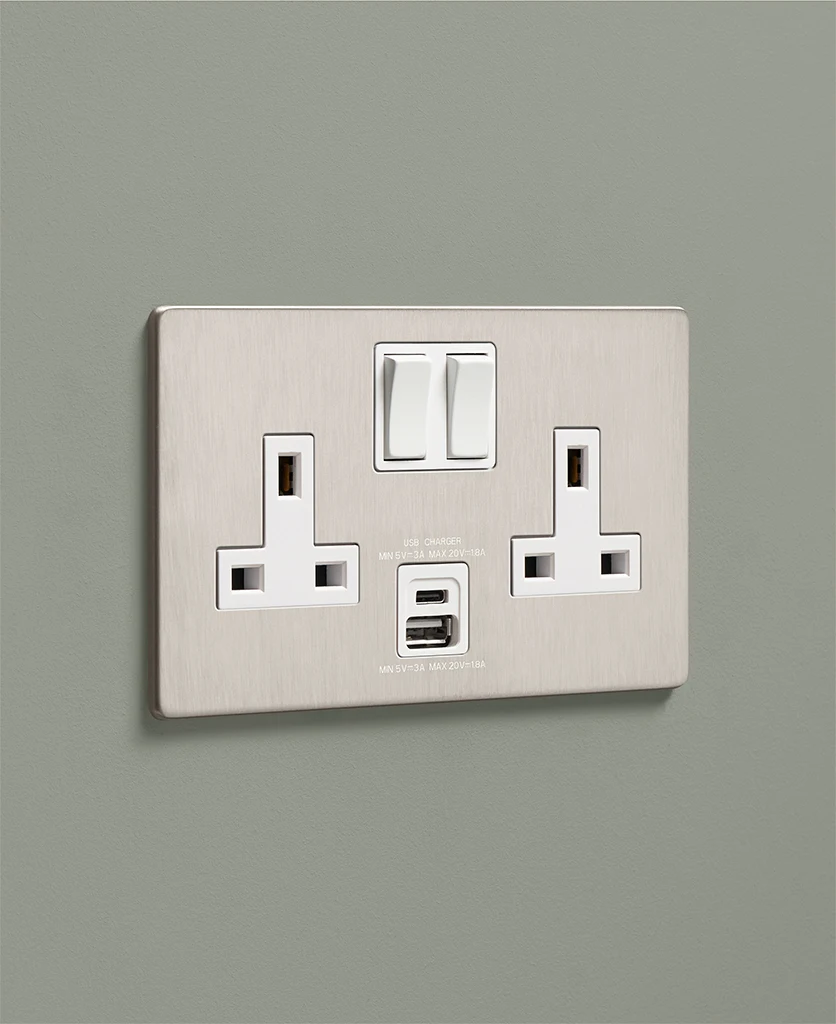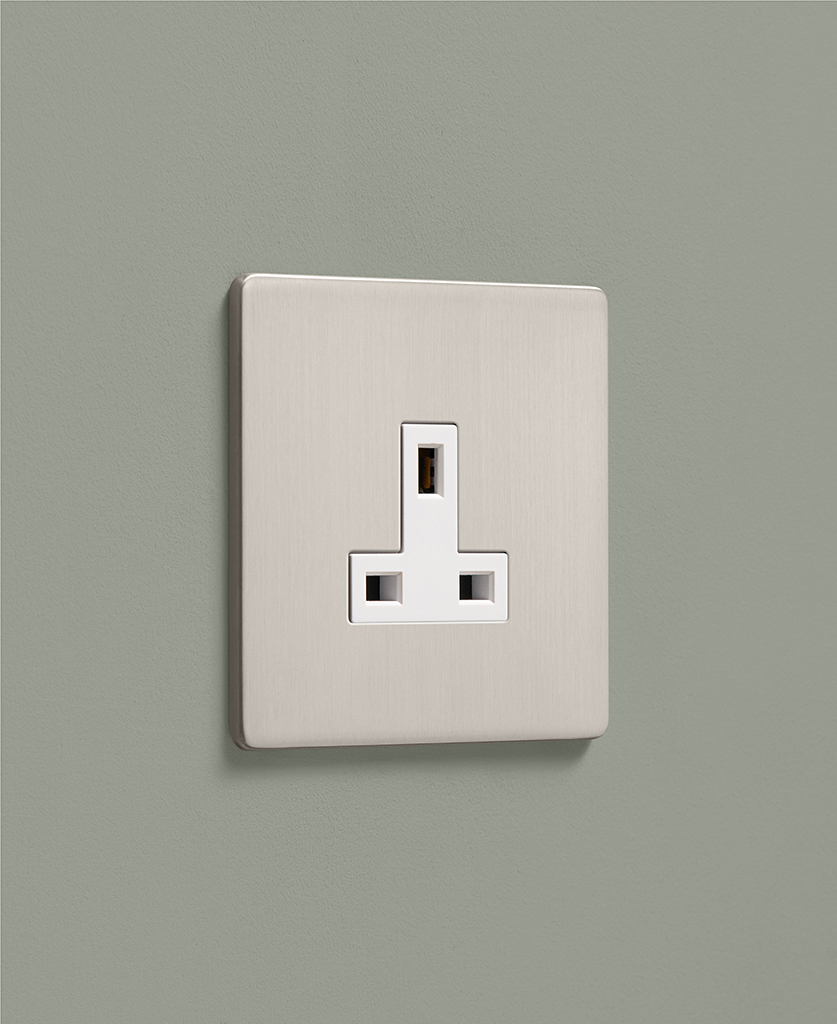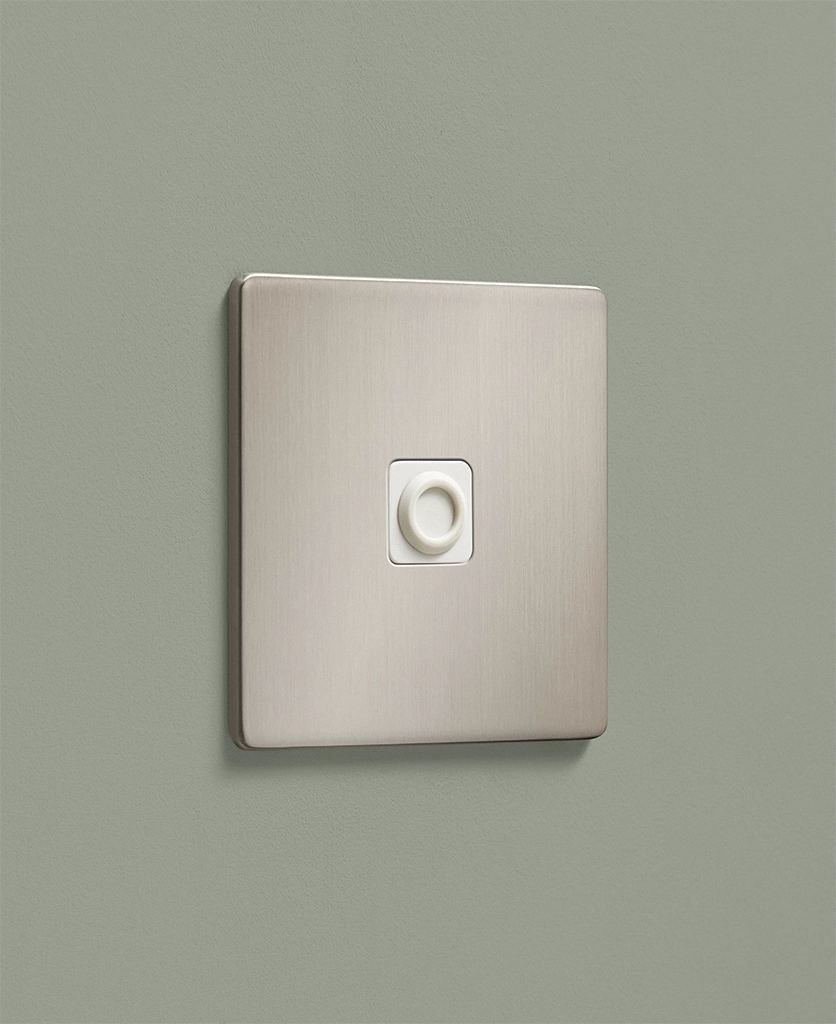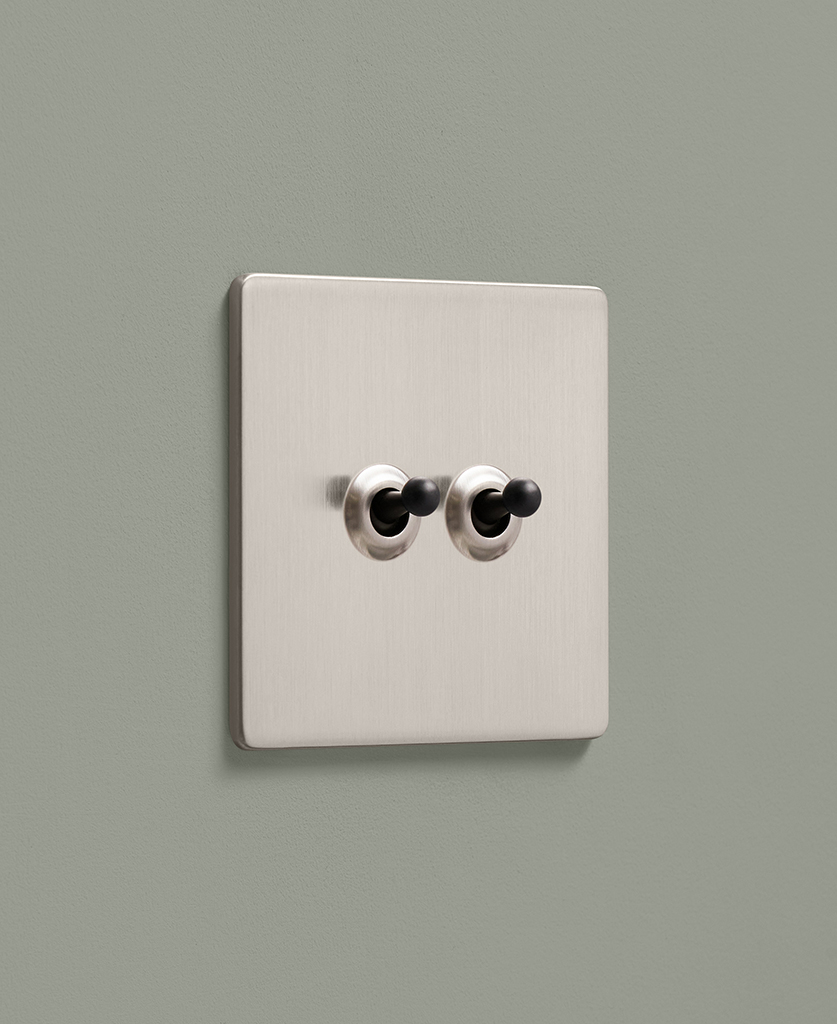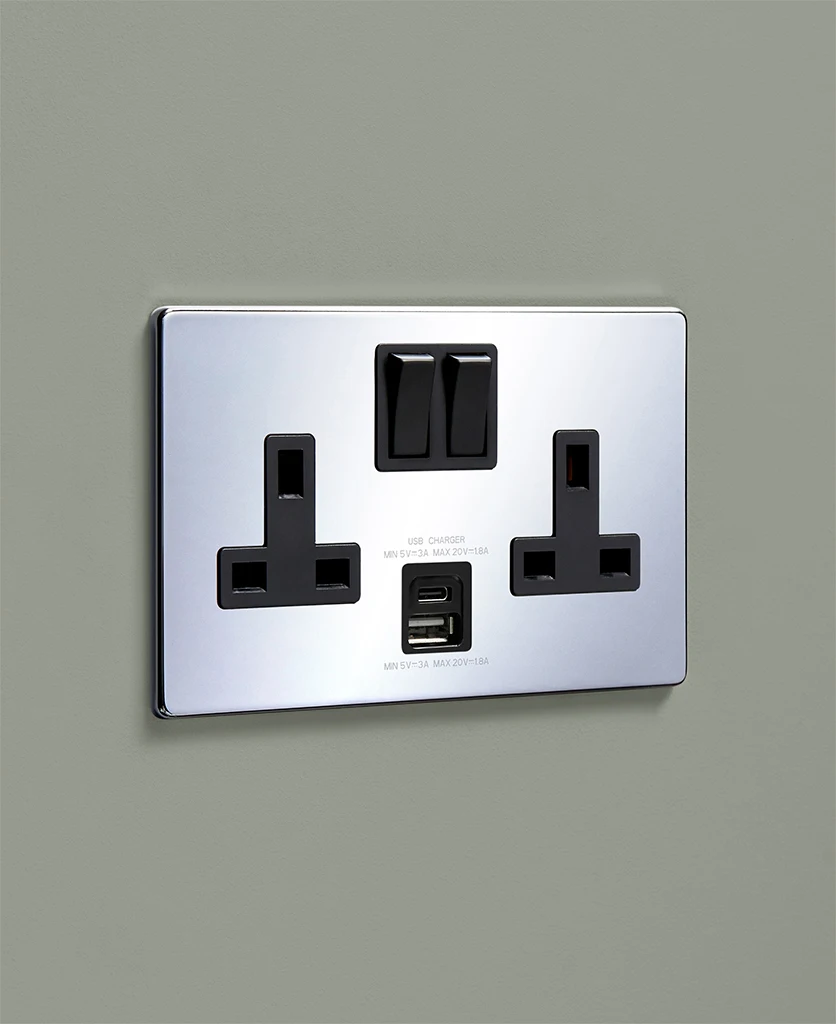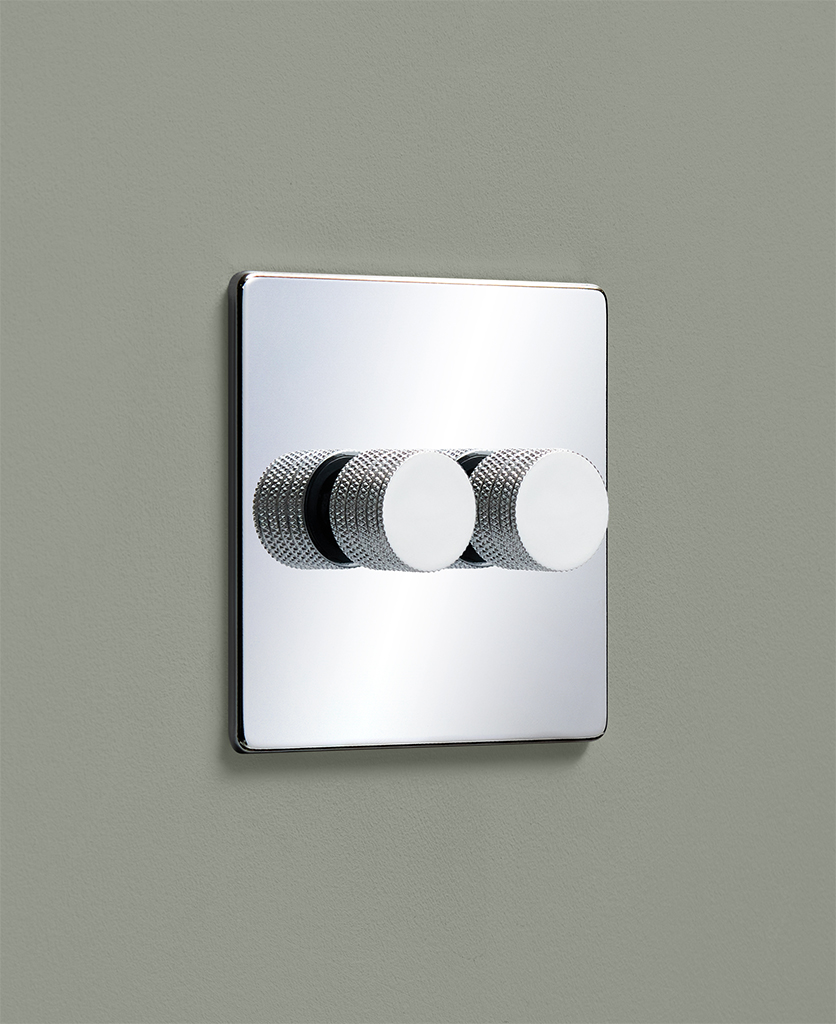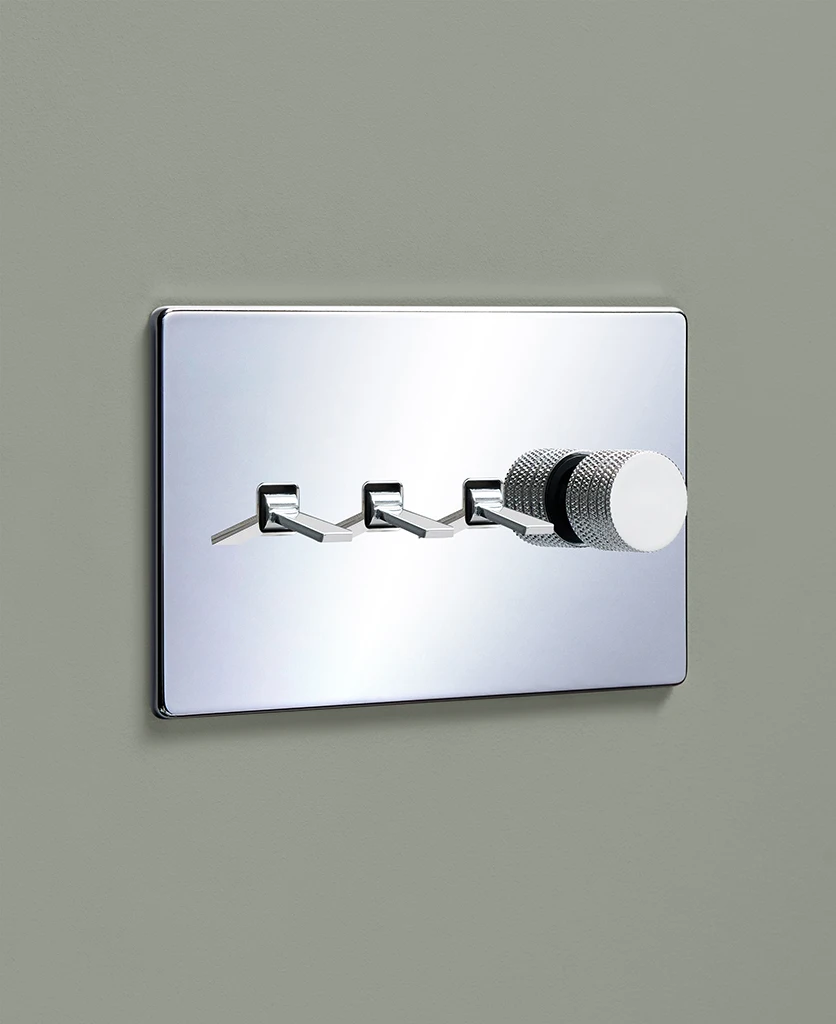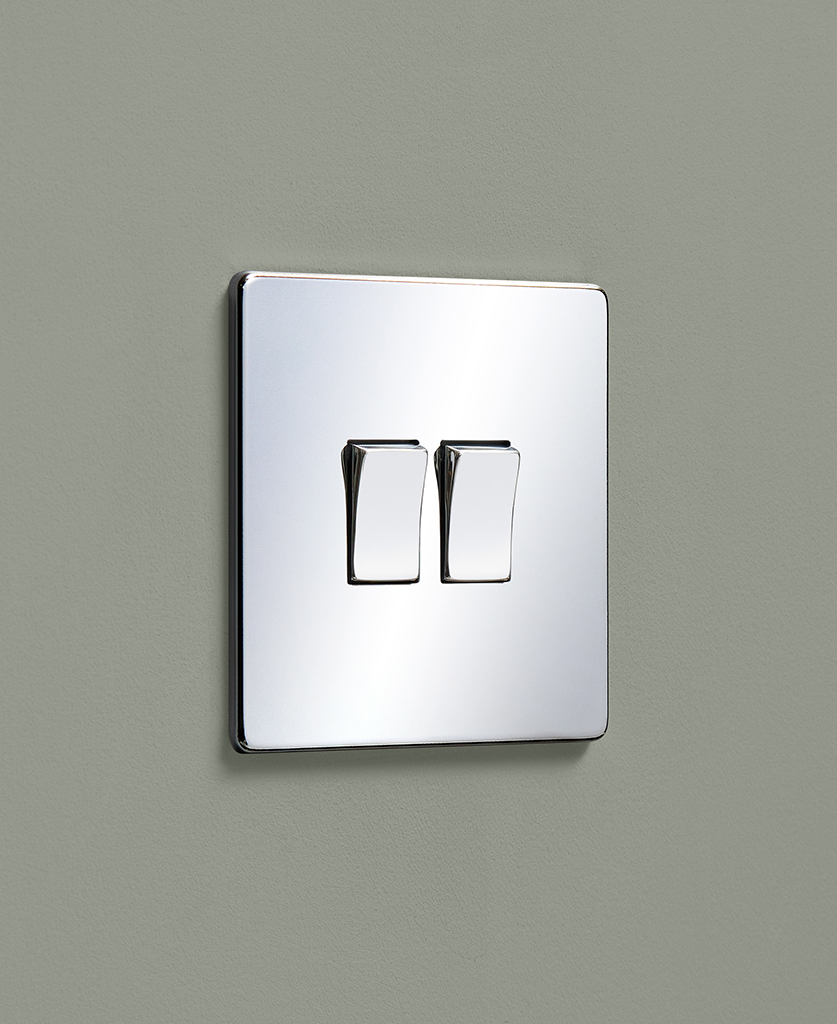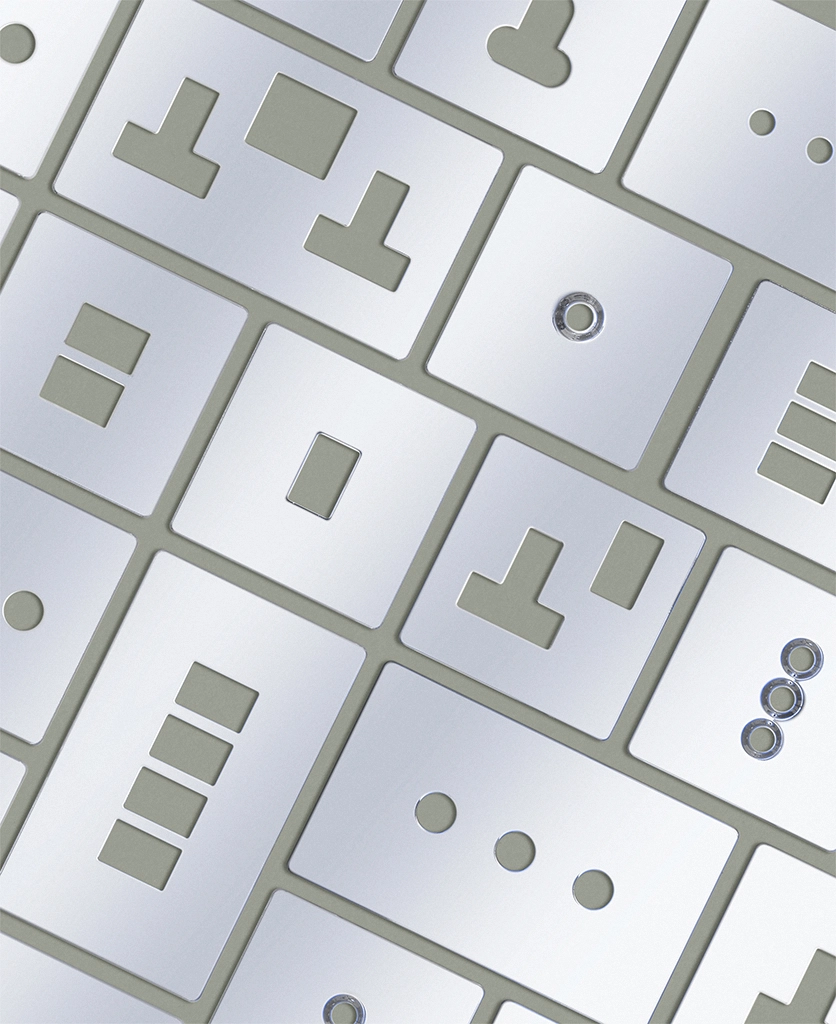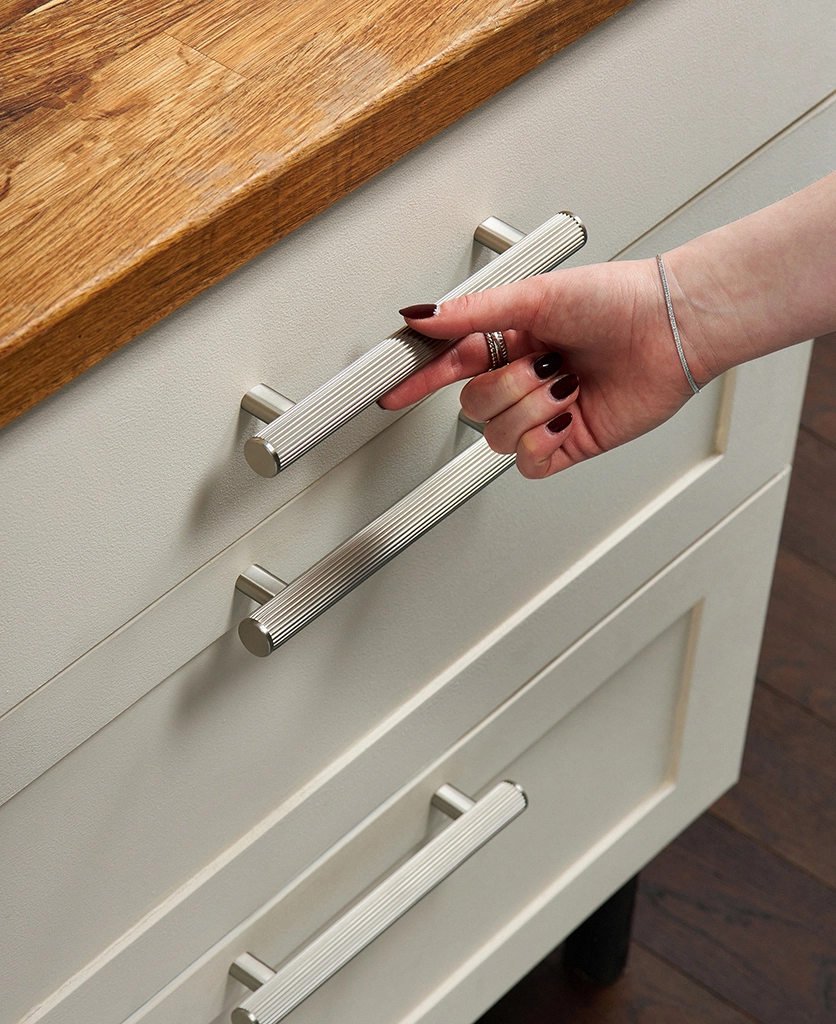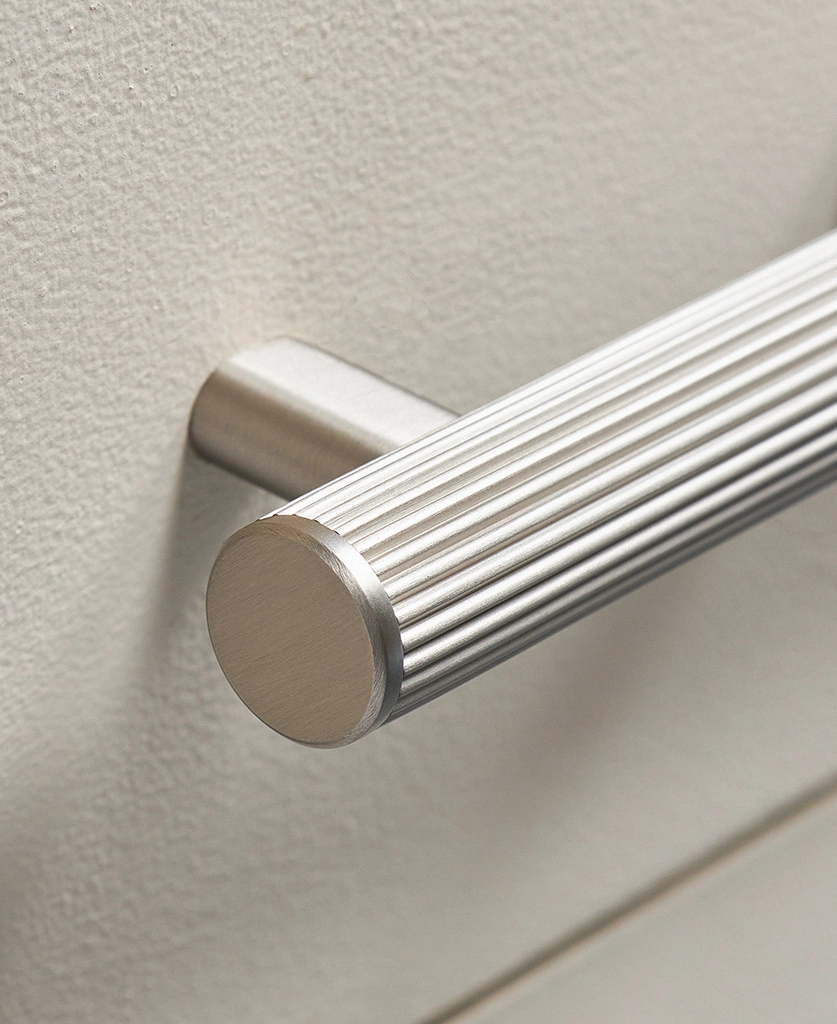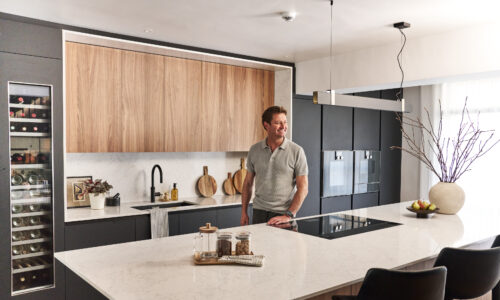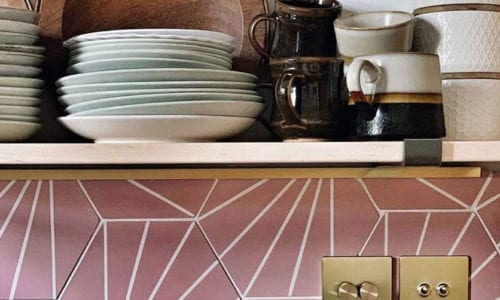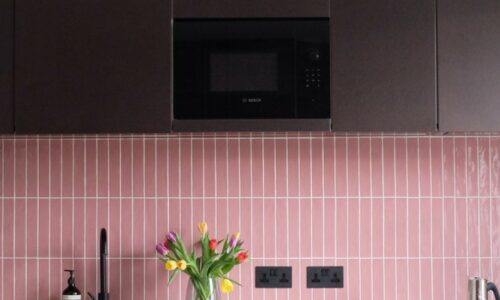Brushed Nickel vs Chrome: What’s the Difference?
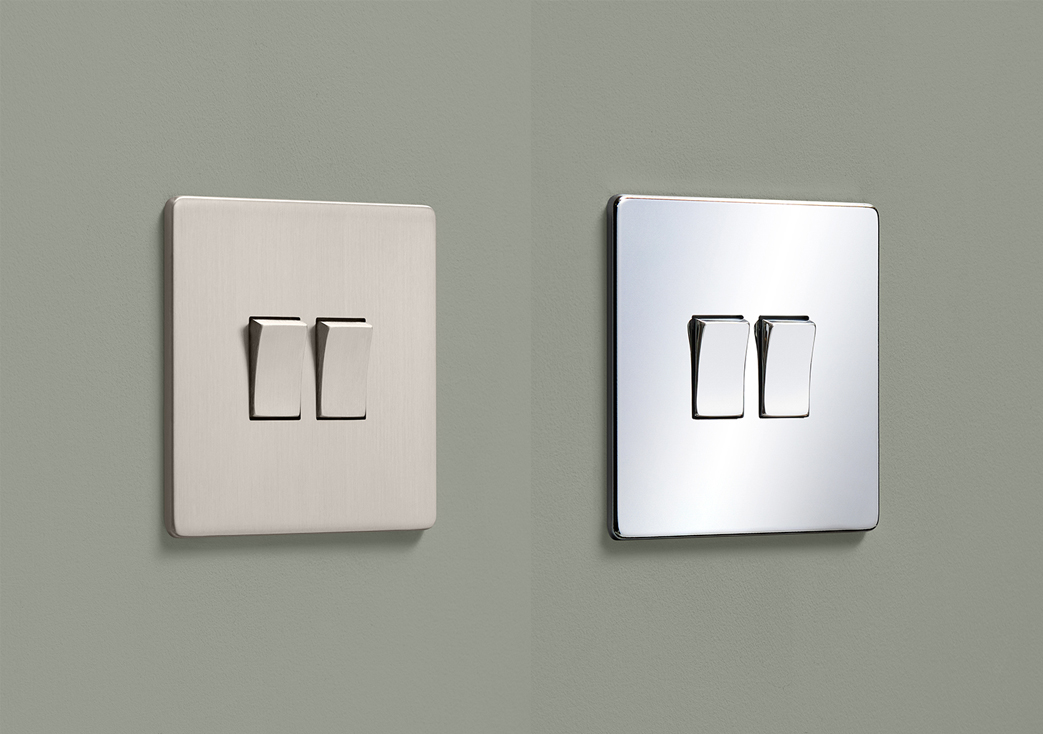
Considering how to give your home décor a much-needed refresh, you turn your attention to your light switches and sockets. You know a silver tone is the best option to match your interior design, but is brushed nickel or chrome the right finish for your home?
While both finishes are beautiful, they have a number of differences that might make one more favourable than the other.
Discover the key differences between brushed nickel vs chrome finishes to help you decide which one best complements your style and space.
Brushed nickel vs chrome: The key differences
Choosing between brushed nickel and chrome finishes might seem like a small detail, but it can have a big impact on the overall aesthetic of your home. There are also differences in terms of maintenance that you may want to consider before making your decision.
Brushed nickel
Appearance: Brushed nickel has a semi-satin finish and resembles stainless steel, which is why many homeowners choose this finish to complement their stainless steel kitchen appliances. It has a slightly yellow undertone, giving it a warmer appearance than chrome.
Maintenance and durability: Brushed nickel is easy to maintain, with its satin finish hiding any fingerprints, smudges, or dirt build-up. Its etched-looking appearance makes it super resilient to scratches, which means it will stand the test of time.
Most suitable for: The yellow undertone of brushed nickel gives it the appearance of an aged metal, making it the perfect choice for vintage-style spaces. Consider opting for this finish if you’re looking to create Art Deco or industrial-style interiors.
Chrome
Appearance: Chrome has a cooler colour temperature than brushed nickel, giving it a more bright silver appearance. Polished chrome has a shiny, mirror-like appearance, while satin chrome has a smooth, matte finish.
Maintenance and durability: Polished chrome requires frequent cleaning as fingerprints and smudges are very visible on the metal. However, chrome with a satin finish is fairly easy to maintain as marks are less noticeable. Chrome is very durable and will stand the test of time.
Most suitable for: Chrome is a sleek and modern finish, making it the perfect choice for adding contemporary flair to your home. Polished chrome stands out beautifully in modern, minimalist interiors.
See our blog on satin chrome vs polished chrome for more information on the difference between these two finishes.
When it comes to purchasing silver switches and sockets for your home, regardless of whether you choose a chrome or nickel finish, you’ll find you have a choice between black or white inserts. This allows for further customisation, with black adding a modern twist and white providing a more subtle, classic look.
How to choose the right finish for your home
Brushed nickel and chrome are both beautiful finishes that are sure to add charm and sophistication to your interiors, whether found in your switches and sockets or handles and door knobs. But which option is the best choice for your home?
Here are some factors to consider when choosing between brushed nickel vs chrome finishes:
1. Blend with your existing interior design
Think about the style of your home and your interior design preferences. Brushed nickel tends to be the most suitable choice for vintage-inspired interiors because of its slightly aged appearance, while chrome is a better fit for contemporary interiors because of its sleek and modern appearance.
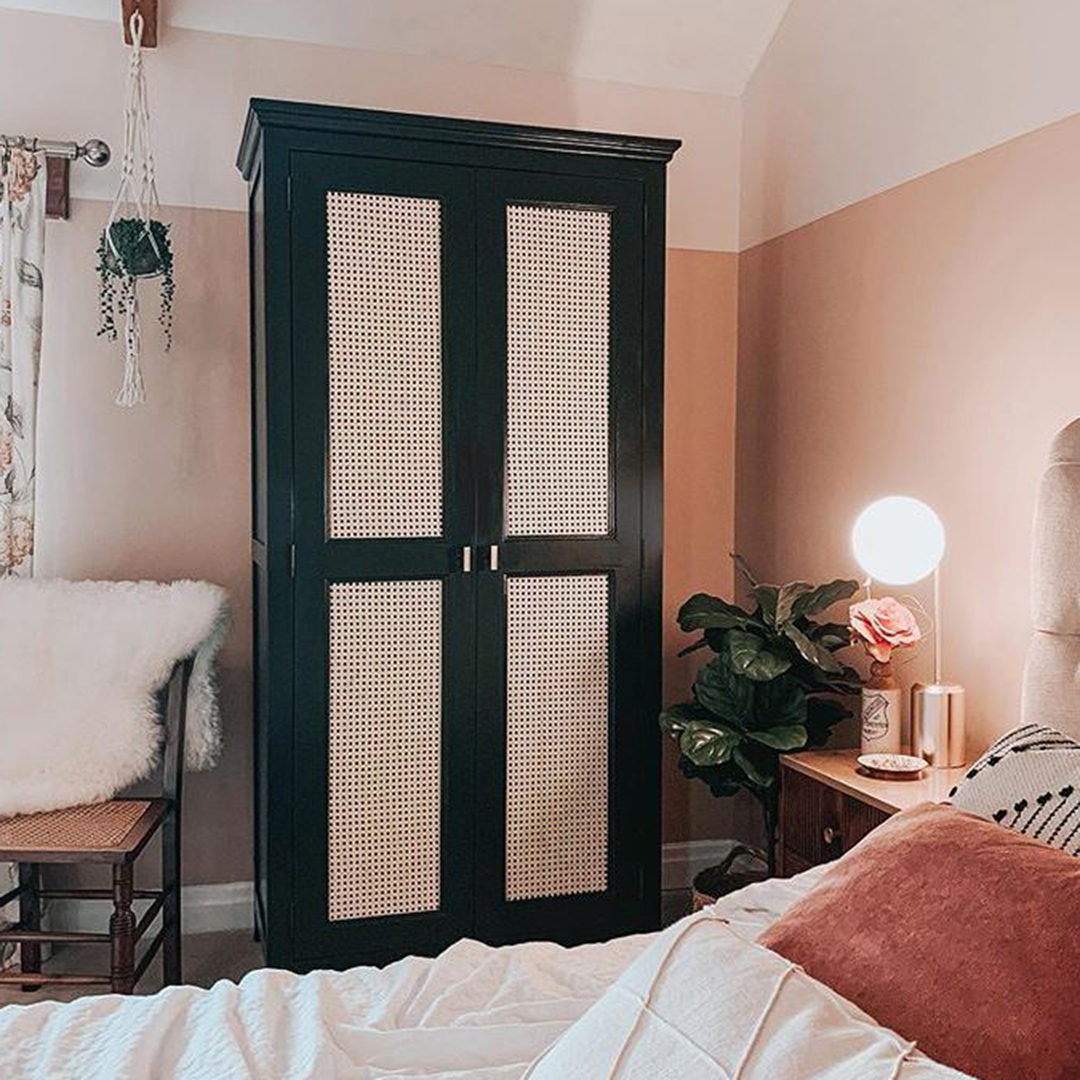
Image courtesy of @sandpiperbarn
2. Consider maintenance
Brushed nickel is generally easier to clean than chrome because fingerprints and smudges are much less visible, making it the ideal choice if you’re looking for a low maintenance option.
Due to its shiny finish, fingerprints and smudges are much more likely to be visible on polished chrome finishes, so you should only choose this option if you’re prepared to undertake more regular cleaning. However, if you opt for a satin chrome finish, maintenance is less likely to be an issue as satin chrome has a matte finish.
3. Reflect on how you use the space
For busy areas of your home or rooms prone to moisture, such as bathrooms and kitchens, you might find that brushed nickel is the most practical choice because of its resistance to fingerprints and watermarks.
You might choose to opt for a shiny chrome finish in less busy areas of your home, or spaces where the aim is to impress. Consider using chrome in dining rooms, hallways, guest rooms, or anywhere else where you want to make a statement with eye-catching reflective fixtures and fittings.
4. Complement your existing fixtures and fittings
The best way to create a cohesive look is to ensure you choose a finish that matches the other metallic finishes within your home. If your wall lights all have polished chrome finishes, it would make sense to stick with this finish for your other fixtures and fittings to tie the space together – brushed nickel finishes would likely look out of place in this context.
Alternatively, it might be that your kitchen already has a lot of stainless steel appliances, so you might opt for a brushed nickel finish for things like your kitchen door handles as this option looks similar to stainless steel.
Show us your nickel or chrome interiors
Now that you know the difference between brushed nickel vs chrome and how to choose the right finish for you, we’d love to see how you’ve incorporated these finishes into your interiors. Tag us on Instagram @dowsingandreynolds – we can’t wait to see what you’ve come up with!

